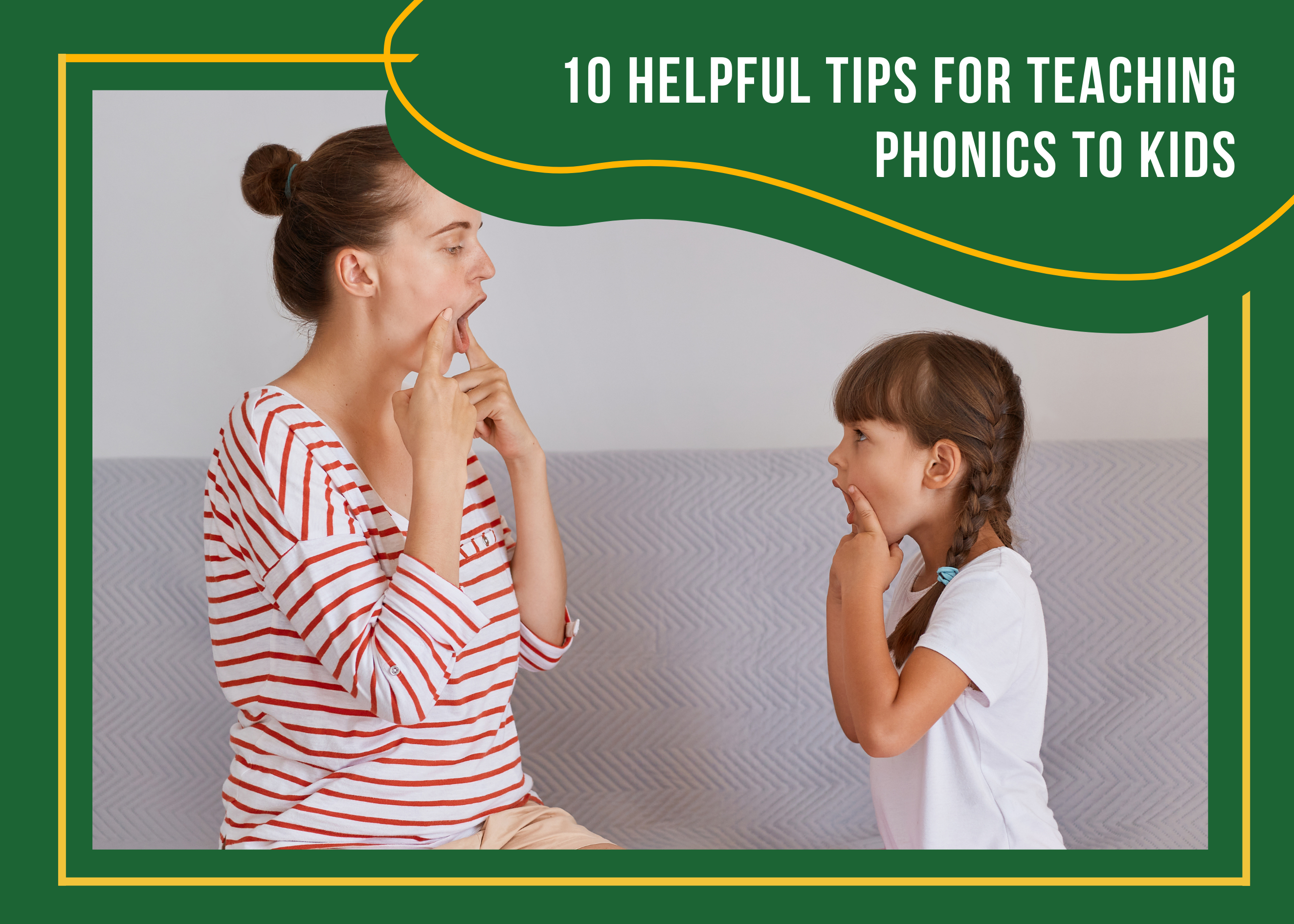10 Helpful Tips for Teaching Phonics to Kids
When we break down the word phonics, we can see that it is made up of two parts: 'phon', which refers to sound, and 'ics' which is a branch of study. Phonics is understanding the relationship of written symbols and speech sounds. It involves learning about the individual sounds that make up words and how these sounds can be put together to form words.
Phonics is a vital skill for kids because it is fundamental to correctly reading and spelling words. It is an evidence-based approach to reading and a tool to help kids become more confident readers.
Teaching phonics would be an excellent place to start if you're looking for ways to strengthen your child's reading skills. It is one method that has shown to be successful for many kids. Read on for these ten tips to help you teach phonics at home.
Start with phonics phonemes
Phonemes are the individual sounds that make up a word. When teaching phonics to kids, it is vital to start with the basic phonemes or units of sound. Once they understand the basic phonemes, they can begin putting them together to form words. By starting with the basic building blocks of sound, they will be better able to read and pronounce words correctly. In addition, they will be more likely to remember the spellings of words they encounter in their reading. This approach can also help to prevent common reading errors, such as reversing letters or leaving out sounds.
Make phonics fun
Learning phonics can be a lot of fun if you make it an enjoyable experience for your child. Try using games, music, and hands-on activities to help them practice phonics. For example, you could create a game where they have to match words with their phonemes or sounds. You could also sing phoneme songs or use flashcards to practice phonemes and spellings. Making the learning process fun will keep kids motivated and engaged in learning phonics.
Practice regularly
Regular practice is essential when teaching phonics to kids. They must review what they have already learned on a regular basis so that they can reinforce the phonemes and spellings. Try to set aside a few minutes each day for phonics practice. This can be done in the form of reading, writing activities, or phoneme games.
Focus on phonemic awareness
Phonemic awareness is an important skill that helps kids learn phonics. It is the ability to recognize phonemes and manipulate them into words. It is best taught through hands-on activities such as sound matching, syllable splits, word building and rhyme recognition. These activities will help your child develop their phonemic awareness skills and become better at correctly recognizing phonemes and spelling words.
Use cue cards
Cue cards are a great tool for teaching phonics. They can be used to help kids remember phonemes, spellings and syllables. You should write a phoneme or word with its corresponding spelling on each card. Then have your child match the phoneme with the correct word. You could also use cue cards to practice syllable segmentation by having them break down words into their sounds.
Read together
Reading together is an excellent way to promote phonics learning in children. Choose phonetically regular books and introduce words containing phonemes they have already learned. As you read, encourage them to try and sound out unfamiliar words using the phonics skills they have learned. This will help them develop their knowledge of how phonemes combine to form words.
Get phonics apps and software
Many phonics learning resources available online can help reinforce phonemes and spellings. Phonics apps, software, and games can give kids a fun way to practice phonics outside school or in traditional lessons. Most of these phonics tools will also track their progress so you can easily see how far they have come in their phonics learning journey.
Use visual cues
Using visuals when teaching phonics is an effective way to help kids understand the relationship between phonemes and letters. For example, you could use flashcards with pictures or symbols that represent each phoneme. This will give them a concrete representation of what the sound looks like, making it easier to remember. You could also make phonics charts with words and their phonemes written next to them for reference.
Ask for feedback
Encourage your child to give you feedback on their phonics learning experience. By asking them questions about the phonemes they have learned or what activities they enjoyed, you can better understand how well they comprehend the material. This will enable you to tailor the phonics lessons according to their needs and adjust your teaching methods accordingly.
Celebrate success
It's important that kids feel successful in their phonics learning journey so that they remain motivated and engaged with phonics lessons. A great way to do this is by celebrating their achievements, no matter how small they may seem. This could be a reward system or simply giving them positive reinforcement whenever they accomplish something phonics-related.
Ultimately, phonics is an essential skill that children need to learn to become proficient readers and spellers. By following these ten tips for teaching phonics to kids, you can ensure that your child has the best chance at mastering phonetics and succeeding in school and beyond.
At Mrs. Myers' Learning Lab, we specialize in fun, interactive classes for developing readers. Our engaging process leads to students gaining self-confidence, interpersonal skills, and a love for learning that extends far beyond the classroom. Learn more by visiting our website!





